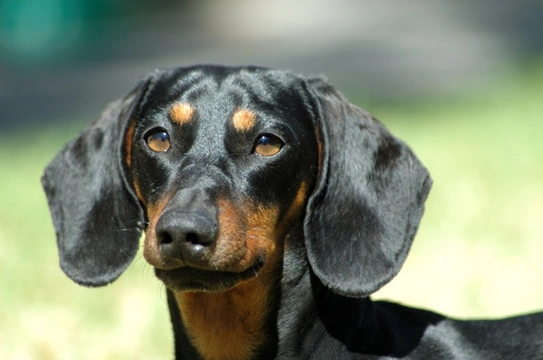
What is follicular dysplasia in dogs?
Many dog breeds are predisposed to suffering from a genetic disease that causes them to develop alopecia which is known as follicular dysplasia. The disorder causes a structural abnormality in a dog’s hair follicles which causes them to lose the hair is certain areas of the body. There are many types of the condition which are explained below.
Structural follicular dysplasia explained
When a dog suffers from structural follicular dysplasia, it negatively impacts each affected hair which becomes brittle and weakened. This in turn, means that hairs are easily broken. The loss of hair in specific areas of a dog’s body is caused by over-grooming as well as trauma which is especially true of when a collar rubs on a dog’s neck. Occasionally, the hair will regrow, but often it is weaker and therefore more easily broken. The condition is seen in dogs when they are anything from 2 to 4 years old and the area most commonly affected tends to be on their backs, toward a dog’s tail. With this said, hair loss might also progress to a dog’s trunk over time.
Atrophic follicular dysplasia explained
Some breeds suffer from atrophic follicular dysplasia which sees the hair follicles found on certain areas of their bodies becoming slowly and progressively miniaturised which can be likened to a man going bald. The breeds most predisposed to suffering from atrophic follicular dysplasia includes the following:
- Dachshund
- Miniature Pinscher
- Chihuahua
As time passes, the loss of hair or alopecia gets progressively worse. In toy and miniature breeds, this is typically seen around their necks, chests, abdomens and inner thighs. In male dogs, it’s their ear flaps that are the most affected by the condition. When a Greyhound suffers from the condition, it’s their thighs, chests and abdomens that are the most affected.
Cyclic follicular dysplasia explained
Cyclic follicular dysplasia typically flares up in the late autumn or the early spring and it leads to hyperpigmentation and bilateral hair loss on a dog’s flanks. The hair can regrow over a 6-month period, but often a dog’s coat colour and its texture can change as a result. The condition typically affects dogs when they are anything from 2 to 4 years old.
Follicular dysplasia explained
Another condition known as follicular lipidiosis affects the Rottweiler and it usually flares up before a dog is 9 months old. It results in hair loss around a dog’s face and feet and typically affects the red or mahogany coloured parts. The condition is caused by an invasion of lipids in a dog’s hair follicle cells.
Colour dilution alopecia explained
An inherited form of the follicular dysplasia is known as colour dilution alopecia and it affects dogs with fawn or blue coloured coats. These are the dilution colours of brown and black with fawn being the diluted version of brown and blue being that of black. The dilution of these two colours is caused when the transfer and storage of melanin is negatively impacted. When clumps occur within skin and hair follicle’s melanocytes, hair shafts are weakened and as a result they are easily broken.
The signs that a dog is suffering from colour dilution alopecia sees hair loss which typically occurs along their backs where they also develop recurrent infections on affected areas of skin. The breeds most at risk of inheriting this form of follicular dysplasia include the following:
- Dobermann
- Dachshund
- Great Dane
- Rhodesian Ridgeback
- Whippet
- Italian Greyhound
- Standard Poodle
- Chow Chow
- Miniature Pinscher
- Yorkshire Terrier
- Silky Terrier
- Chihuahua
- Boston Terrier
- Saluki
- Newfoundland
- German Shepherd
- Shetland Sheepdog
- Schipperke
- Bernese Mountain Dog
- Bulldog
Other forms of follicular dysplasia
There are two breeds that suffer from another form of follicular dysplasia namely the Alaskan Malamute and the Siberian Husky which affects dogs when they are anything between the ages of 3 to 4 months old although some Malamutes can be affected when they are slightly older too. The condition affects a dog’s guard hairs found on their trunks which sees them being lost and coats tend to turn a reddish colour
Dobermanns, Miniature Pinschers as well as Manchester Terriers with red or black coats, suffer from a form of follicular dysplasia when they are anything from 1 to 4 years old. It starts on a dog’s flanks, but then spreads to their backs.
Piebald coloured dogs can suffer from a form of the condition known as “black hair follicular dysplasia” which affects dogs soon after they are born. The most affected dog breeds are as follows:
- Gordon Setter
- Saluki
- Papillon(male dogs)
- Bearded Collie
- Large Munsterlander(male dogs)
The condition is thought to be like colour dilution alopecia and as such it is an autosomal recessive disorder that parents can pass onto their offspring.



